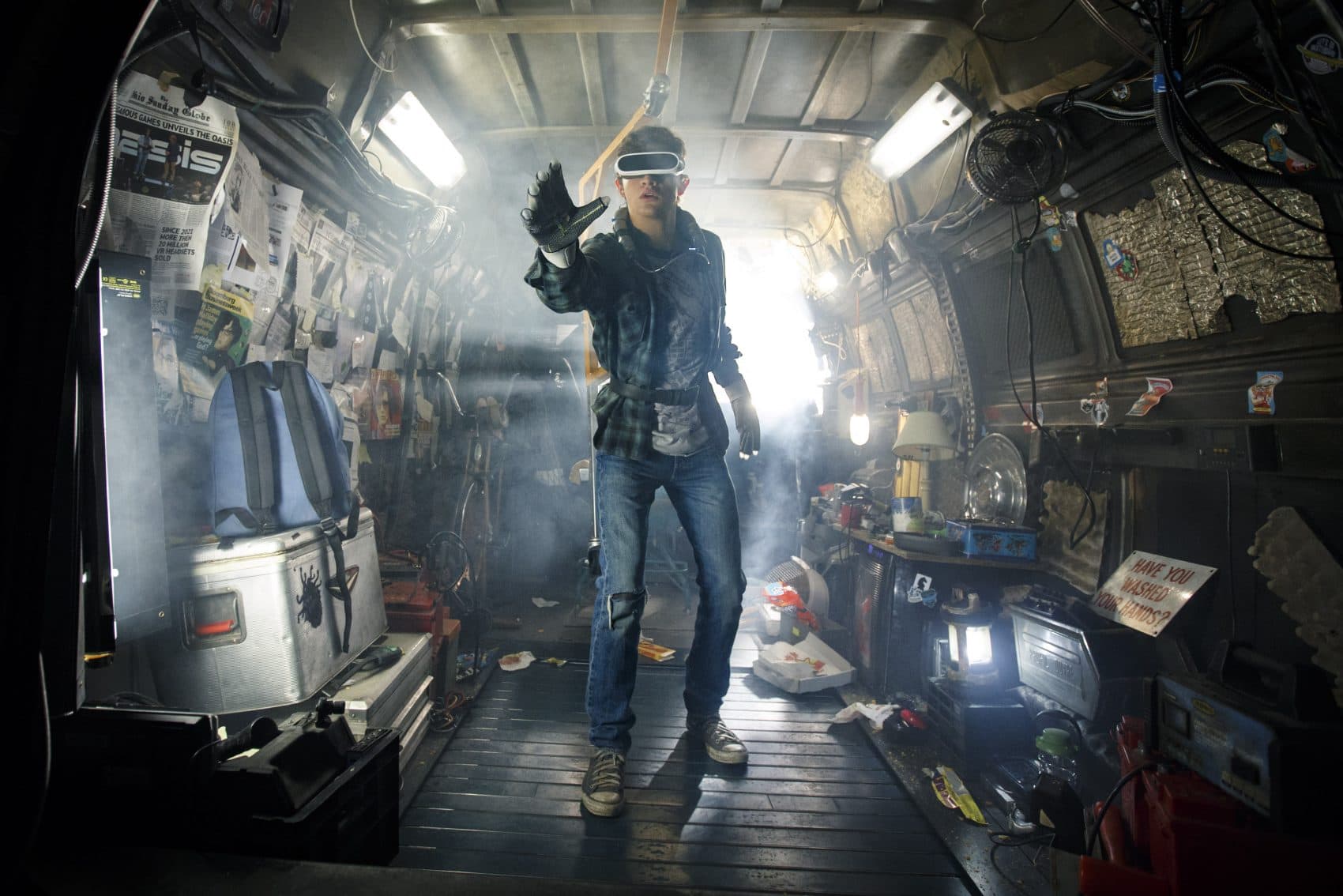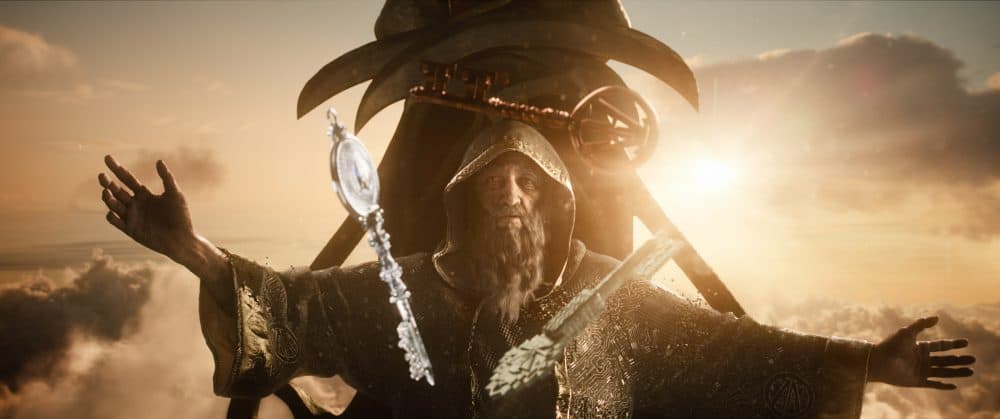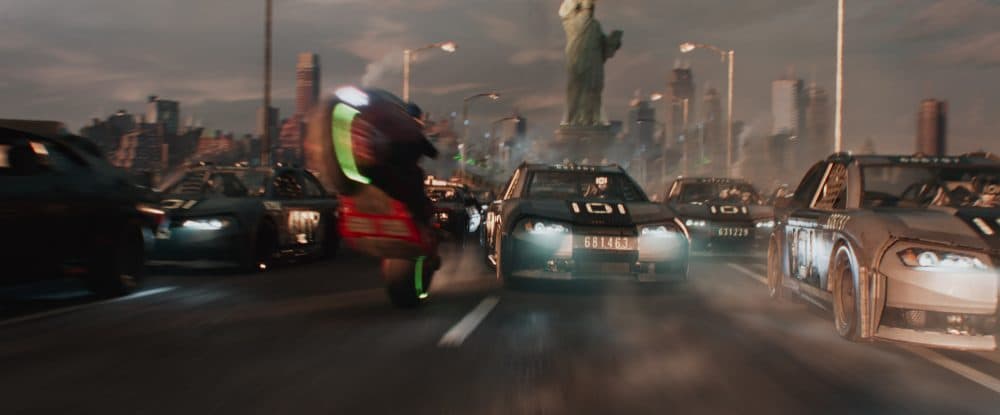Advertisement
Review
A Lumbering Nostalgia Party, Spielberg's 'Ready Player One' Speeds In Reverse

Perhaps the most telling moment in Steven Spielberg’s lumbering nostalgia party “Ready Player One” arrives early on, when our hero discovers that the only way to win a fantastically impossible virtual reality auto racing game is by throwing his car into reverse and speeding around the track backward.
Our precocious teen protagonist happens to be driving Marty McFly’s DeLorean from the Spielberg-produced “Back to the Future,” signaling this 1980s-crazed movie’s retro-mania and a rather unseemly fixation on tokens from its director’s glory days. But in this case, objects in the rearview mirror feel much smaller than they appear.
Based on Ernest Cline’s 2011 best-seller, “Ready Player One” posits a dystopian dump 30 years in the future, where people live like pigs in giant, vertical stacks of mobile homes and spend all their free time in a VR simulation called the OASIS. Invented by a Steve Jobs-esque cult figure (played by Mark Rylance, doing a bizarre imitation of Dana Carvey in “Wayne’s World”), the OASIS is a gaudy, neon paradise where people are free to act out their wildest (and weirdly chaste) fantasies while a dirt-poor orphan like Wade Watts (Tye Sheridan of “Mud”) can transform himself into a superstar gaming champion named Parzival.

Faster than you can say Willy Wonka, Rylance’s character has kicked the bucket and offered full custody and ownership of the OASIS to whoever can solve a series of riddles and games inspired by the pop culture of his youth. Wade quickly becomes the Charlie of this digital chocolate factory, taking the lead in the competition thanks to his videogame prowess and obsession with garbage entertainment made half-a-century before he was born. The most chilling thing about this movie’s nightmare vision of the future is the idea that in 2045 people still won’t stop talking about Ferris Bueller and “The Goonies.”
Wade and his small gang of ethnically diverse, underdeveloped sidekicks need to save the OASIS from the evil corporation IOI, which has recruited a large army of players running around on treadmills in their shiny offices to try and win the contest. The extent of IOI’s dastardly, nefarious plan for spoiling this virtual utopia appears to be some sort of tired-membership program and advertising space within the OASIS. (The latter is quite hilariously considered a grave sacrilege by a film that features prominent product placement for Pizza Hut during its opening scene.)
It’s easy to see why Cline’s book became a bestseller. “Ready Player One” subserviently seeks to flatter its target audience with a spectacular array of semi-clever references to cool stuff from their childhoods. Meanwhile the entire premise of the story is that an otherwise unremarkable, antisocial, adolescent white boy’s skill at video games and deep knowledge of trivial ephemera will someday save the world. It’s fanboy fellatio — an unquestioning nerd fantasy in its purest form. I found it all almost unbearably depressing.
What’s weirdest is Steven Spielberg signing on to direct a piece of material that only ever aspired to be a blatant Spielberg knockoff in the first place. (It’s as if Paul McCartney suddenly started covering Oasis songs.) Like his disastrous “Hook,” in which the filmmaker self-consciously tried to wrestle with his own Peter Pan complex and anxieties about fatherhood, “Ready Player One” incoherently attempts to assess the legacy of his earlier work and the popcorn escapist fantasies that inspired generations of imitators, for better or worse.

Thing is, those early Spielberg pictures are a lot more sophisticated than even he probably remembers, and they’re a hell of a lot more sophisticated than “Ready Player One.” Adapted by Cline himself along with frequent superhero movie screenwriter Zak Penn, the movie can’t even find a way to put any peril into the endless action sequences.
In this weirdly weightless virtual universe, characters are able to die and start over again, or even just unplug themselves if anything ever gets too hairy. Spielberg is a master craftsman and can choreograph the crap out of stunning chases involving King Kong and the T. Rex from his own “Jurassic Park” — or a fistfight between Mechagodzilla and the Iron Giant — but all the action just lies there inert on the screen because it never feels like anything’s at stake.
I hate to indulge the old critics’ cliché of saying a movie feels like watching someone else play a video game, except in this one you literally are watching someone else play a video game. Hell, the whole climax involves the world looking on in suspense while Wade fiddles with an old Atari 2600. Not even a director as kinetically gifted as Steven Spielberg can make that exciting.

It’s also impossible not to feel like these folks would be better off trying to repair their disastrously broken society instead of spending all their time and energy fighting to keep commercials out of their precious video game. If the movie made any sense it would end with Wade unplugging the OASIS for good, but the most Spielberg and company are willing to muster without alienating their audience is a mild admonishment to shut off the console every once in a while and go try getting yourself a girlfriend.
With his recent run of vibrant historical dramas — “Lincoln,” “Bridge of Spies” and “The Post” — Spielberg has been slyly using the past to comment upon the present. These movies are energized and engaged, and despite their deceptively drab settings, they crackle with a visual invention missing from this picture’s bloated CGI spectacle. The best latter-day Spielberg films look back in order to tell us about where we are. “Ready Player One” just speeds along in reverse.
